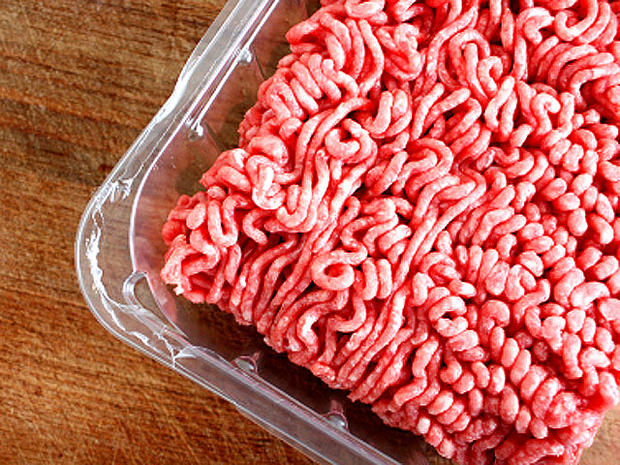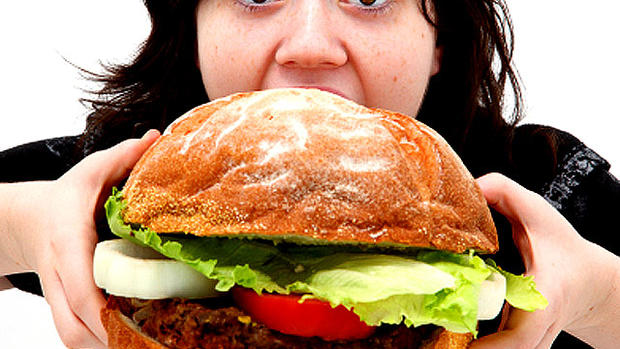USDA: Schools can decide if "pink slime" will be served in school lunch
(CBS/AP) - School districts can now opt not to use the much-debated "pink slime" lunch meat.
PICTURES: Burger breakdown: Best and worst
The U.S. Department of Agriculture (USDA) announced Thursday that starting in the fall, schools enrolled in the national school lunch program will have the choice not to use the byproduct. The schools will have the choice between 95 percent lean beef with "pink slime" or less lean bulk ground beef without it. According to an USDA official with knowledge of the decision, the changes won't be made immediately because of existing contracts.
"USDA only purchases products for the school lunch program that are safe, nutritious and affordable - including all products containing Lean Finely Textured Beef. However, due to customer demand, the department will be adjusting procurement specifications for the next school year so schools can have additional options in procuring ground beef products. USDA will provide schools with a choice to order product either with or without Lean Finely Textured Beef," the USDA said in a statement issued to Healthpop.
Pink slime in ground beef: What's the big deal?
Report: USDA school lunch meat contains "pink slime"
McDonald's scraps "pink slime" from burgers
Another USDA official told Healthpop that the USDA only provides 20 percent of school lunches on average, while 80 percent is ordered by schools/districts outside of USDA. The statement said that schools purchase food through the USDA program, which provides more than 180 nutritious food items that are fresh, frozen, packaged, canned, dried or in bulk.
"Pink slime" is the more common name for what industry insiders call "lean finely textured beef." It's a low-cost ingredient made from fatty leftover meat trimmings and other cuts made by South Dakota-based Beef Prodcuts Inc. (BPI). The scraps are heated to about 100 F, spun to remove excess fat and then compressed into blocks to be mixed with ground beef. It is then treated with "a puff of ammonium hydroxide gas" to kill bacteria such as E. coli and salmonella.
The USDA buys about one fifth of the food served in schools nationwide. The Daily reported that the USDA planned to buy 7 million pounds of the byproduct, and claimed the "pink slime" met the high standards set for food safety.
While the department claimed that no more than 15 percent of each serving would consist of pink slime, a spokesperson noted that it would be hard to determine which part of the meal was made up of the trimmings. Parents and children would not be able avoid the byproduct if they wanted to.
The revelation lead to outrage from many parents and food bloggers including Bettina Elias Siegel, known for her website The Lunch Tray. She has started an online petition to stop the USDA from using the product in schools, which has received over 225,000 signatures.
Meanwhile, Google searches for "pink slime" spiked dramatically. It has become the food version of Joseph Kony, the rogue African warlord virtually unknown in the United States until this month, when an online video campaign against him caught fire.
The story is reminiscent of the anger when McDonald's was revealed to be serving "pink slime." The fast food chain has since opted not to use the byproduct in their meat, Healthpop reported.
The USDA source, who spoke on condition of anonymity because the official announcement was not made yet, said that the agency believes the ammonia treatment is safe, but that it wanted to be transparent and that school districts wanted choices.
"School districts have made requests and school districts want, basically, choice," the official said Wednesday evening. "And we respect that, they're our customers."
But why is "pink slime" striking a chord now?
Issues can to go from a simmer to an explosion when content with broad interest -- such as like food safety -- is picked up and disseminated by widely connected people, said Marc A. Smith, director of the Social Media Research Foundation. These people act like "broadcast hubs," dispersing the information to different communities.
"What's happening is that the channels whereby this flood can go down this hill have expanded," Smith said "The more there are things like Twitter, the easier it is for these powder kegs to explode."
In this case, Siegel thinks the added element of children's school lunches could have set off this round.
"That's what upset me. This idea that children are passively sitting in a lunch room eating what the government sees fit to feed them and McDonald's has chosen not to use it, but the government is still feeding it to them," she said. "That really got my ire."
The USDA this year is contracted to buy 111.5 million pounds of ground beef for the National School Lunch Program. About 7 million pounds of that is from Beef Products Inc., though the pink product in question never accounts for more than 15 percent of a single serving of ground beef.
Beef Product Inc. stresses that its product is 100 percent lean beef and is approved by a series of industry experts. The company's new website, pinkslimeisamyth.com, rebuts some common criticisms of the product ("Myth 4: Boneless lean beef trimmings are produced from inedible meat").
The National Meat Association also has joined the fight, disputing claims that the product is made from "scraps destined for pet food" and other claims. The industry group also said that ammonium hydroxide is used in baked goods, puddings and other processed foods.
Association CEO Barry Carpenter, who has visited BPI plants and watched the process, said critics don't seem to have the facts.
"It's one of those things. It's the aesthetics of it that just gets people's attention," Carpenter said. "And in this case, it's not even legitimate aesthetics of it. It's a perception of what it is."


